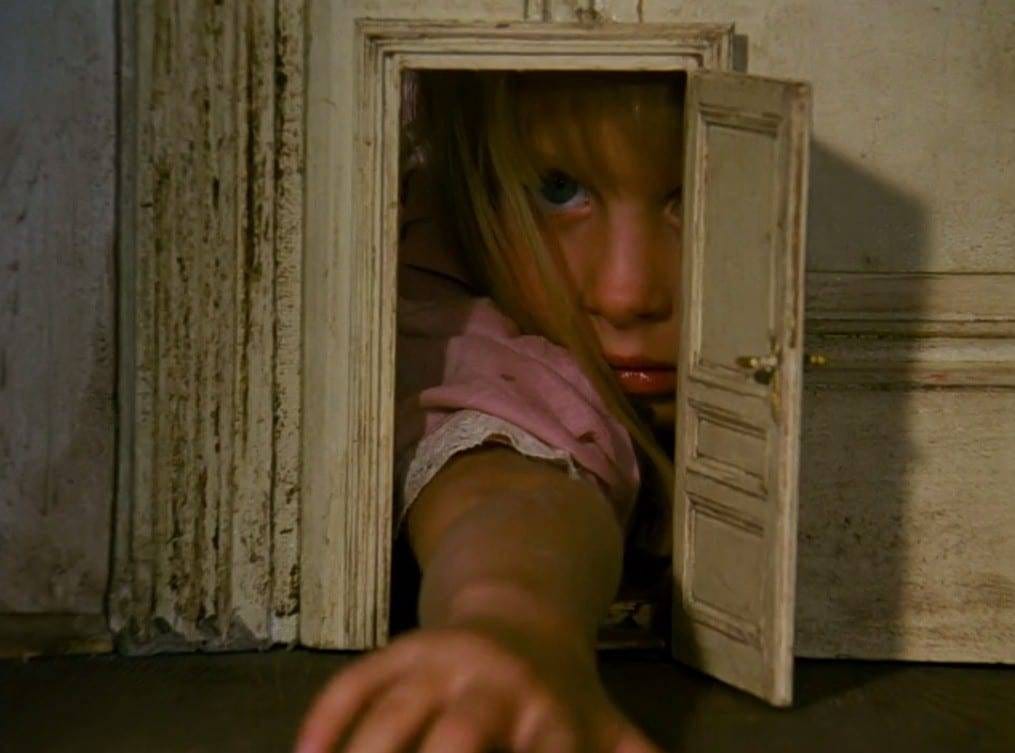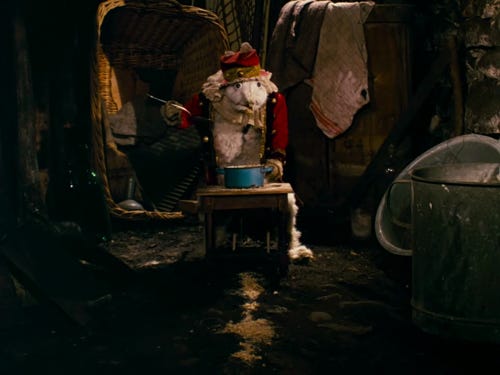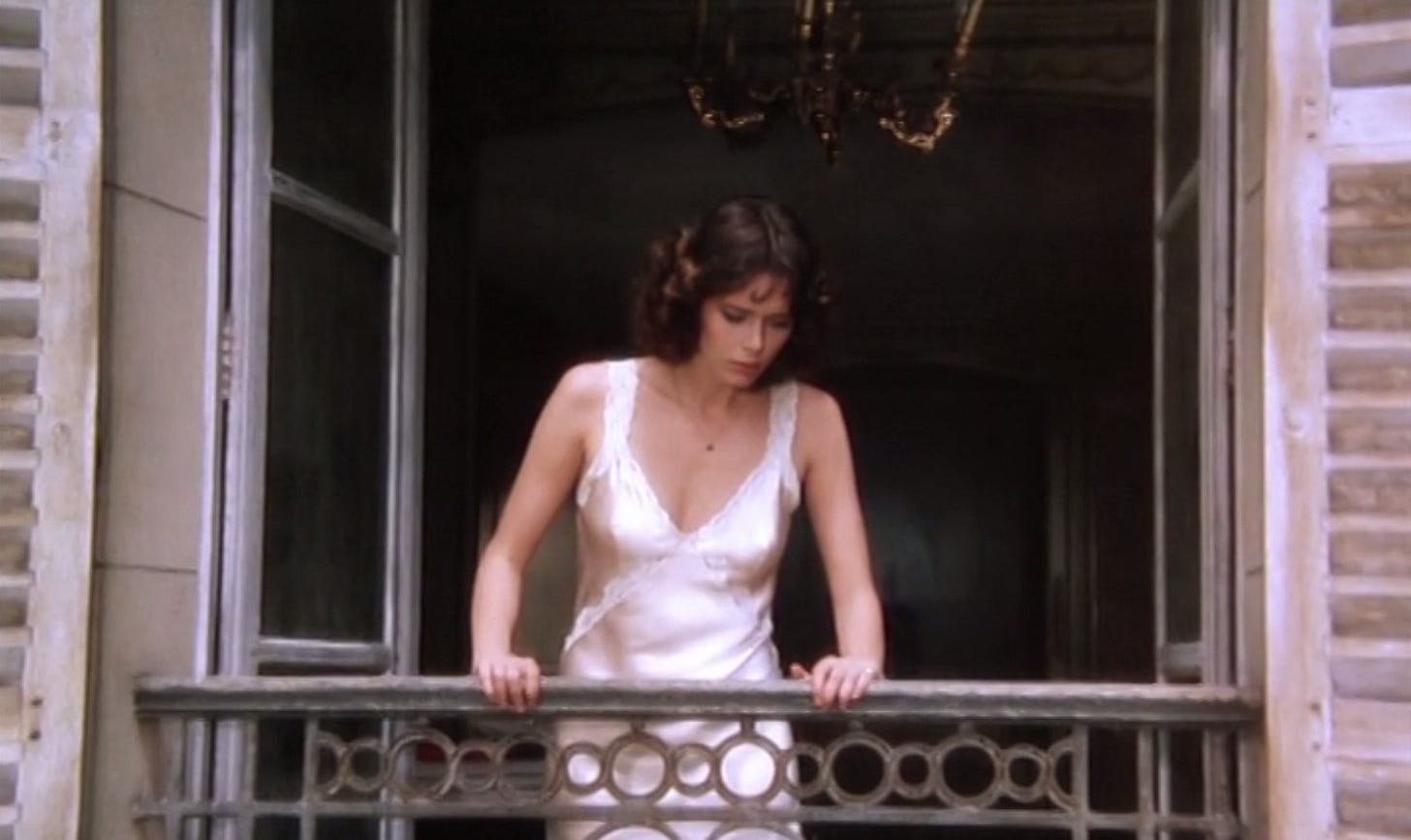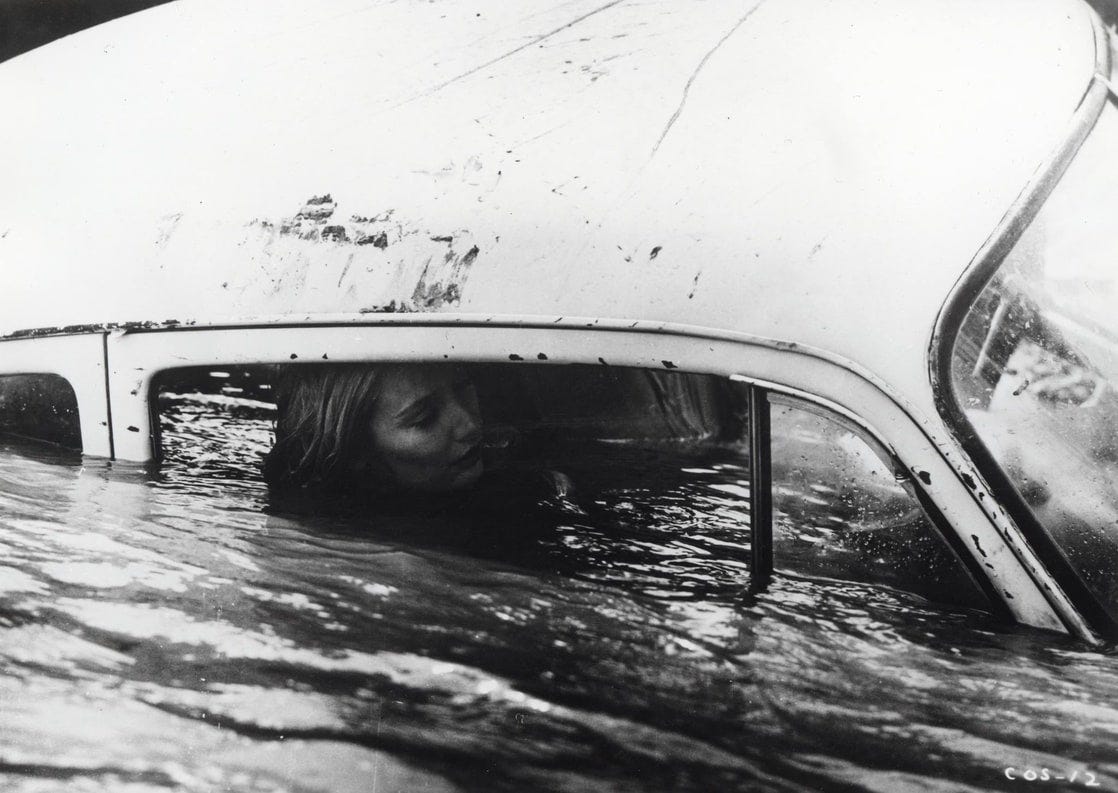Alice, the character, represents a person in a kind of limbo between the real world and the supernatural world, a predicament that we in the West attribute to children. Children must necessarily cast off the world of fantasies to become adults, or so we believe. The two films covered here, a Czech film from 1988 and a French film from the '70s, highlight the manner in which we construe reality. There's an adult reality and a child's reality. In a child's reality, a stuffed rabbit can come to life, free itself, and lead you on a journey to meet other bizarre characters far from home. This is the plot of Alice (1988), in which the title character follows the white rabbit on a stop-motion journey. But Sylvia Kristel's role of Alice Carroll in Alice and the Last Escapade is very different. We should be prepared for that as it stars the Dutch actress of Emmanuelle fame. Alice Carroll, the adult, plays a bored French housewife who drives off after getting annoyed with her husband and finds herself trapped with weird people on a rural estate.
Both Alices find themselves in a supernatural landscape, though the adult Alice is too delusional to realize just how supernatural her setting is. The clues to the adult Alice's predicament are purely rational. She meets off-putting people (humans, not anthropomorphic animals), and her only clue that something is off is their strange behavior. They say borderline unpleasant things to her, refuse to help her escape, and then refuse to answer her questions when she tries to pump them for information. Other than that, everything's normal. No talking animals, no reality changing before one's eyes, no talking rabbits. The world of the adult Alice may be real after all.
It is only in the world of Alice the child that we have clear visual clues that nothing is real. Naturally, this is because an adult would presumably be able to tell that they are in a dream by the unexplainable things they see, whereas a child may not. Rabbits do not speak. Holes in cabinets or cupboards do not lead to world just as real as our own. On the other hand, the adult Alice is clearly fooled by the people she meets, as is the viewer. In fact, as we learn later, the world of the adult Alice is not real either, though it looks real, and the clues are in the collective strangeness of the people and the implausible predicament that you would drive down the lane from a country manse only to find yourself back at the same manse at the end of the lane.
Try though she might, Sylvia Kristel’s Alice cannot make it back home.
In fact, Alice or the Last Escapade takes a page from one of my fav black and white films, Carnival of Souls. Alice Carroll spends the entire film trying to get back to the husband she ran away from, only to wind up back with the strange people in the mansion. It's impossible to escape them, and Alice is told that the only way to get away from them is if she goes to Hell, which is where she’s headed next. At the end of the film, we the viewer learn that Alice suffered a car accident on the way to mansion in the beginning and has been dead the whole time.
But Alice the child is very much alive. Her world of objects that come to life and animals that speak is more real than that of Sylvia Kristel's Alice, stuck as she is between heaven and hell. Jan Svankmajer's Alice (1988) roughly follows the plot of "Alice in Wonderland." Described as dark, the film is narrated by the character of Alice, played by Kristýna Kohoutová. It is strikingly beautiful and filled with memorable scenes crafted by bleak and depressed Eastern Bloc artists (I presume). A stop motion rat starts a fire on Alice's head to make dinner, and Alice cries until the room is flooded with her tears. She frequently changes into a doll and back into a human, being forced to fight off an onslaught of angry birds whilst in doll form. But again, hers is the real world of the living.
Perhaps it is children that understand reality better than adults, hemmed in as we adults are by religious ideology and other doctrinaire ways of thinking. Naturally, this is primarily a Western problem as it isn't everywhere that the reality of adults exists within such narrow confines. In some places, the adults believe in talking animals and spirits just like the children do. If the two Alices have taught us anything, it's that adults only return to the thinking of children in the limbo between life and death. A strange predicament indeed.
As in Carnival of Souls, we realize that Alice of The Last Escapade has been dead all the while.






Adult Alice rationality is what can save her (something that really starts at the end of childhood)
Seeing the strangeness, which the word itself comes from change, your higher self knows a machine when it sees one, the scripted clockwork individual. Recently in 2019, China landed a spacecraft to the far side (dark side) of the moon, making history. This craft was called Chang’e 4 (in Chinese myth 'Chang'e drank the elixir herself, which caused her to float up to the sky, where she eventually landed on the Moon. From there, she became the Moon Goddess, living eternally in the Moon Palace') , or you could say, ‘change 4’, or ‘for change’. Anyways. Strange has become a buzzword again with the current political landscape in the USA, and adult Alice knows something is up.
Bowie, with his song Changes, helps explain in his whimsical way:
////Old Alice observation too the new generation///
‘As they try to change their worlds
Are immune to your consultations
They're quite aware of what they're going through’